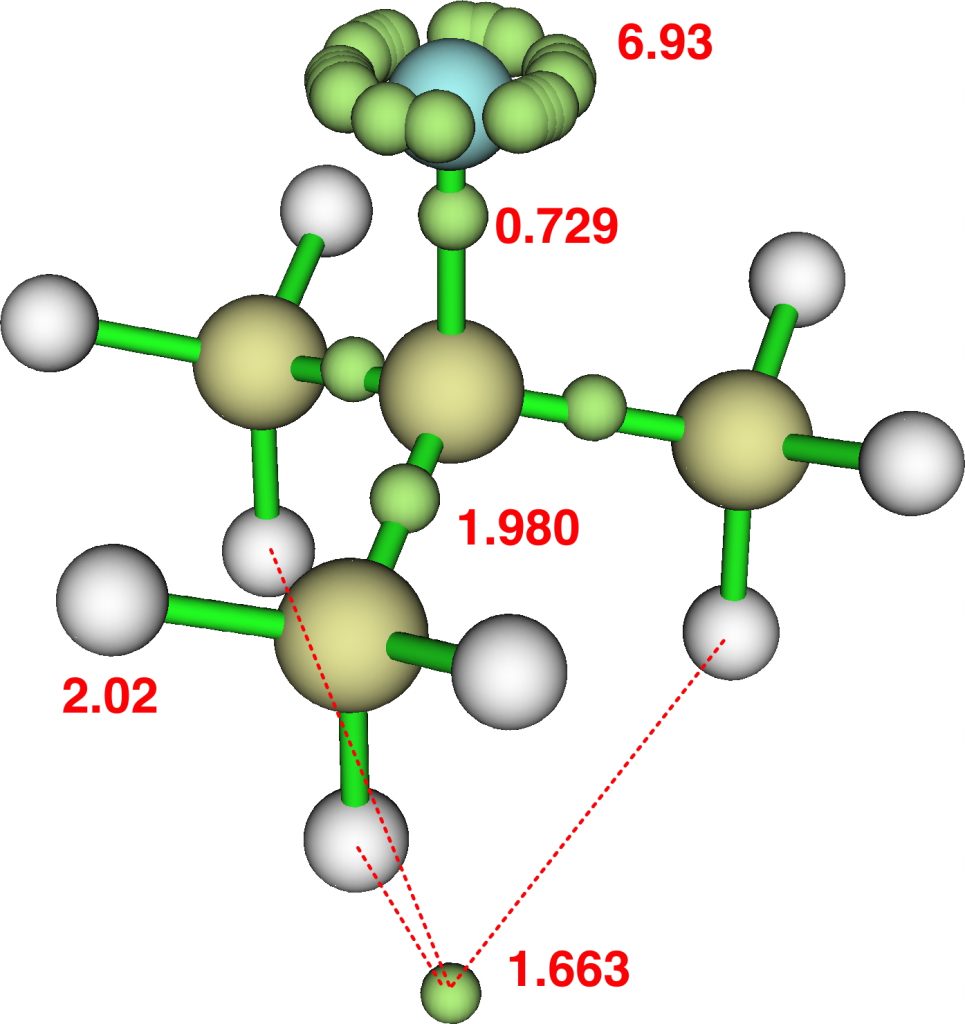Another post inspired by a comment on an earlier one; I had been discussing compounds of the type I.I n (n=4,6) as possible candidates for hypervalency.
A little while ago I pondered allotropic bromine, or Br(Br) 3 . But this is a far wackier report[cite]10.1126/science.aao7293[/cite] of a molecule of light. The preparation and detection of dimer and trimer bound photon states is pure physics; probably considered by the physicists themselves as NOT chemistry. It is certainly true, as a chemist, that I understood only a little of the article.

Last year, this article[cite]10.1038/nchem.2716[/cite] attracted a lot of attention as the first example of molecular helium in the form of Na 2 He. In fact, the helium in this species has a calculated ‡ bond index of only 0.15 and it is better classified as a sodium electride with the ionisation induced by pressure and the presence of helium atoms.
Last year, I showed photos of wildflower meadows in west London close to where we live, evolving as the seasons changed. Today we hear the announcement that London itself is set be declared the world’s first National Park City in 2019. What is a park city you may ask? It draws on the principles of National Parks such as the Peak District, the New Forest, or the South Downs in the UK, but in a city setting.
The topic of open citations was presented at the PIDapalooza conference and represents a third component in the increasing corpus of open scientific information. David Shotton gave us an update on Citations as First Class data objects – Citation Identifiers and introduced (me) to the blog where he discusses this topic.

Another occasional conference report (day 1). So why is one about “persistent identifiers” important, and particularly to the chemistry domain? The PID most familiar to most chemists is the DOI (digital object identifier). In fact there are many; some 60 types have been collected by ORCID (themselves purveyors of researcher identifiers). They sometimes even have different names;
I don’t normally write about the pharmaceutical industry, but I was intrigued by several posts by Derek Lowe (who does cover this area) on the topic of creating new drugs by deuterating existing ones. Thus he covered the first deuterated drug receiving FDA approval last year, having first reviewed the concept back in 2009. So when someone introduced me to sila-haloperidol , I checked to see if Derek had written about it.

I discussed the molecule the molecule CH3F2- a while back.
The title here is from an article on metalenses[cite]10.1021/acs.nanolett.6b01897[/cite] which caught my eye. Metalenses are planar and optically thin layers which can be manufactured using a single-step lithographic process. This contrasts with traditional lenses that are not flat and where the optical properties result from very accurately engineered curvatures, which in turn are expensive to manufacture.
Recollect the suggestion that diazomethane has hypervalent character[cite]10.1039/C5SC02076J[/cite]. When I looked into this, I came to the conclusion that it probably was mildly hypervalent, but on carbon and not nitrogen. Here I try some variations with substituents to see what light if any this casts.
